Buying Guide for the Best Room Air Conditioners
Choosing the right room air conditioner involves understanding your cooling needs, the size of the space you want to cool, and the features that will provide you with the most comfort and efficiency. It's important to consider the size of the unit, its energy efficiency, noise levels, and any additional features that might enhance your experience. By focusing on these key specifications, you can find an air conditioner that not only cools your room effectively but also fits your lifestyle and preferences.Cooling Capacity (BTU)Cooling capacity, measured in British Thermal Units (BTU), indicates how much heat an air conditioner can remove from a room per hour. This is crucial because a unit with too low a BTU won't cool the room effectively, while one with too high a BTU will cool too quickly without removing humidity, leading to a damp, uncomfortable environment. To choose the right BTU, consider the size of your room: small rooms (100-300 sq ft) typically need 5,000-7,000 BTU, medium rooms (300-500 sq ft) require 8,000-12,000 BTU, and large rooms (500-800 sq ft) may need 13,000-18,000 BTU. Match the BTU to your room size for optimal comfort.
Energy Efficiency Ratio (EER)The Energy Efficiency Ratio (EER) measures how efficiently an air conditioner uses energy to cool a room. A higher EER means better energy efficiency, which can lead to lower electricity bills. EER is calculated by dividing the BTU by the power consumption in watts. Look for units with an EER of 10 or higher for good efficiency. If you use your air conditioner frequently, a higher EER can save you money in the long run, making it a smart choice for energy-conscious consumers.
Noise LevelNoise level, measured in decibels (dB), indicates how loud an air conditioner will be when operating. This is important for maintaining a comfortable environment, especially in bedrooms or living areas where quiet is preferred. Air conditioners typically range from 40 dB (quiet) to 60 dB (louder). If you are sensitive to noise or plan to use the unit in a quiet space, look for models with lower decibel ratings. Consider your tolerance for noise and the location of the unit when making your choice.
Installation TypeInstallation type refers to how the air conditioner is set up in your room. Common types include window units, portable units, and through-the-wall units. Window units are popular for their efficiency and ease of installation but require a suitable window. Portable units offer flexibility and can be moved between rooms but may be less efficient. Through-the-wall units are permanent installations that require a wall opening but offer a clean look. Choose based on your room's layout, available space, and whether you need a permanent or temporary solution.
Additional FeaturesAdditional features can enhance the functionality and convenience of an air conditioner. These may include remote controls, programmable timers, sleep modes, and smart connectivity for control via smartphone apps. Features like dehumidifiers and air purifiers can also improve air quality. Consider which features align with your lifestyle and needs. For instance, if you value convenience, a unit with smart connectivity might be ideal, while a dehumidifier feature could be beneficial in humid climates.



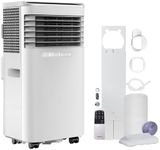
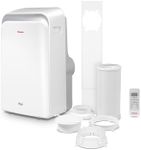



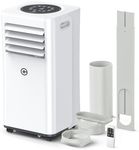

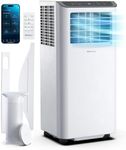

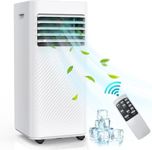
![NETTA Portable Air Conditioner 3-IN-1 7000BTU, Dehumidifier, Cooling Fan - Remote Control, LED Touch Control, Adjustable Temperature, for Home, Bedroom, Living room,Office [Energy Class A]](https://images-proxy.bestreviews.guide/waY-PoBu_CFIE7Zto2_K-W1d4Xw=/0x150/https://m.media-amazon.com/images/I/31v-n7g5uDL._AC_CX679_.jpg)


